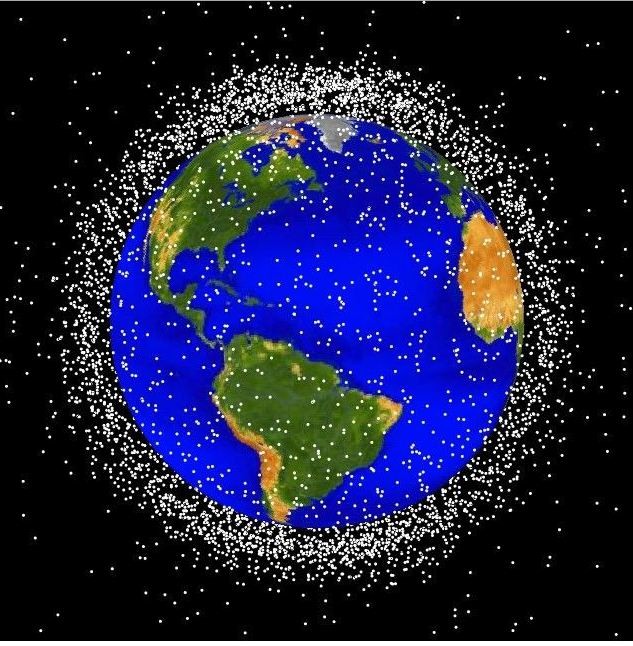Space agencies have been trying to figure out how to eliminate space debris such as defunct, old satellites, rockets and spacecraft floating around space. To date, there are an estimated 500,000 pieces of space junk orbiting Earth travelling at speeds of 17,500 miles per hour as this dangerous speeding debris can apparently cause serious damage to other satellites and even to the International Space Station.
A Japanese team of scientists from Riken research institute has now come up with a solution to eliminate these flying debris in space. Researchers are now proposing to use a technique that will involve blasting some 3,000 tons of debris using a fiber optic laser that is mounted on the ISS.
However, researchers claim that this would involve a two step process. In order to track these space debris, researchers will use the existing European Space Agency's Extreme Universe Space Observatory's infrared telescope that is orginally designed to detect high energy cosmic rays that hit the planet.
The next step involves using a fiber optic laser system that will shoot and knock out objects away from the trajectory and orbit of existing satellites and the ISS until these space junk are burned in the Earth's atmosphere.
Researchers released a statement on Friday saying that this new method will combine the power of these two instruments in order to track down and de-orbit dangerous space debris. The intense laser beam will focus itself on the debris and will generate a high velocity plasma ablation or vaporization that will force the object to lessen its orbital velocity leading to a re-entry to the Earth's atmosphere.
The team is now planning to deploy a relatively small proof of concept experiment on the orbiting space lab with a small 20 centimeter version of the EUSO telescope along with a laser consisting of 100 fibers.
According to lead author of the study, Toshikazu Ebisuzaki, if the plan goes well, the team will now install a full scale version mounted on the ISS that will incorporate a three meter telescope and a laser with 10,000 fibers.
Apart from the ISS, this plan could also become a free flyer mission where it can be placed into polar orbit with an altitude of 800 kilometers where the greatest concentration of space debris is located.
This study is published in the journal, Acta Astronautica.






















